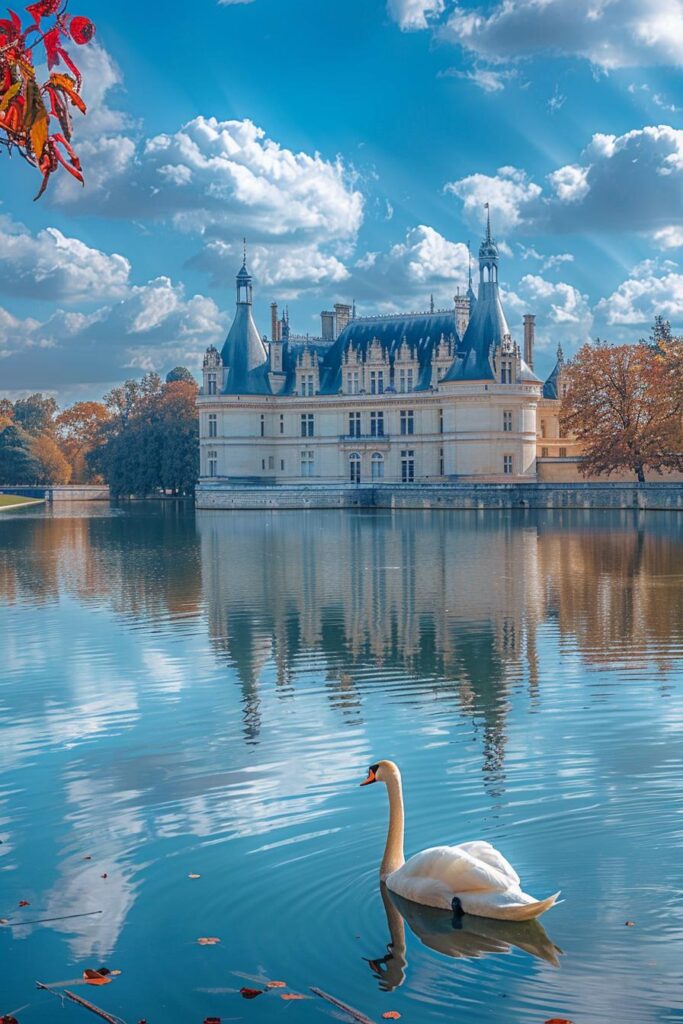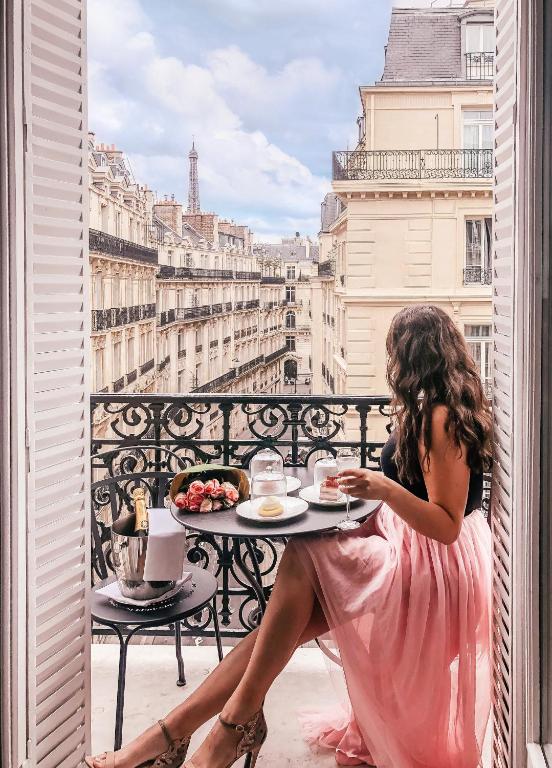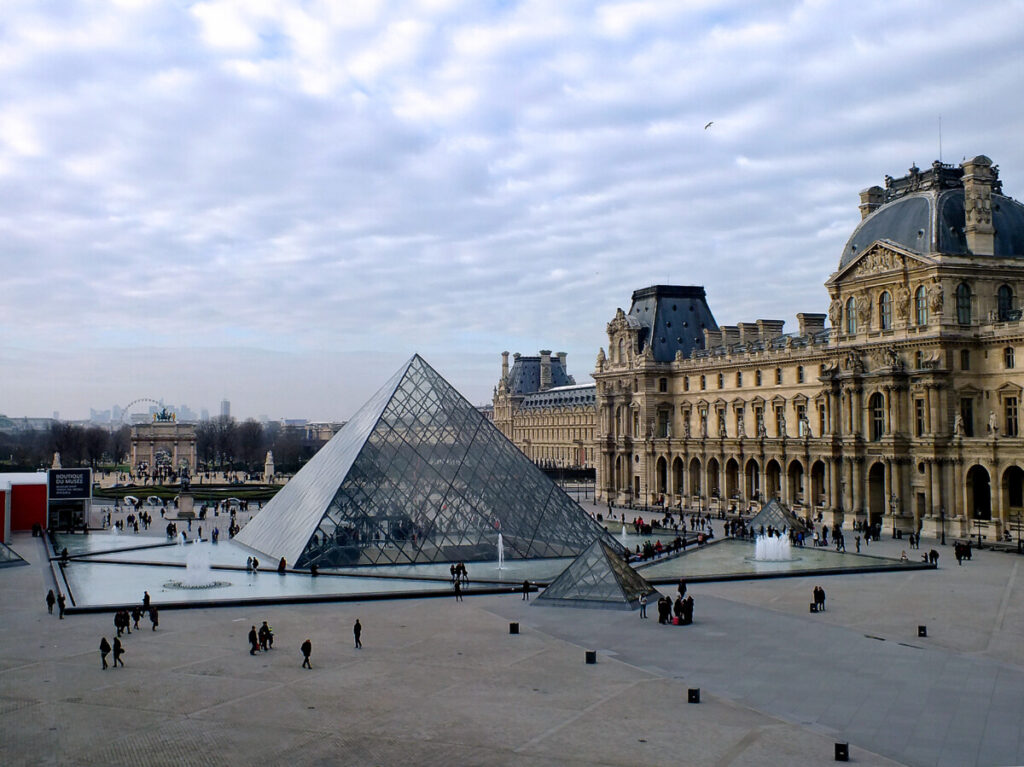The most favorable time to see Paris landmarks is spring or autumn. These shoulder seasons offer kind weather, fewer tourists, and beautiful scenery. March through May, you’ll find blossoming flowers and abundant cultural activities. The city showcases delightful fall colors from September through October with less tourist bustle. Also, remember that weather plays a vital role in such visits. Now, let’s delve deeper into how that factors into planning your Paris journey.
The best time to visit Paris landmarks is in the spring, particularly from mid-March to May. The weather is pleasant, and the city blooms with flowers, making it ideal for exploring iconic sites like the Eiffel Tower, Louvre Museum, and Notre Dame Cathedral.
Table of Contents
- When is the Best Time to Visit Paris Landmarks?
- Weather Considerations
- Weather Impact on Landmark Visits
- Understanding Paris’ Peak Tourist Season
- Pros and Cons of Visiting During Peak Season
- Strategic Visits to Avoid Crowds
- Early Morning Visits
- Late Evening Visits
- Making the Most of Paris’ Daylight Hours
- Seasonal Differences
- Planning Your Itinerary
- Understanding Daylight Hours at Different Landmarks
- Embracing Natural Light
- Seasonal Considerations: Paris Landmarks
- Summer
- Winter
- Spring
- Autumn
- Enjoying Paris: Landmark Experiences by Season
- Spring (March to May)
- Summer (June to August)
- Autumn (September to October)
- Find Things to Do in Paris
- Find Accommodation
When is the Best Time to Visit Paris Landmarks?

Visiting Paris, the City of Lights, is an enchanting experience that captivates millions of visitors annually. However, there are specific times when the city’s allure is amplified by perfect weather and reduced crowds. It’s during these shoulder seasons—spring (March to May) and autumn (September to October)—that you can genuinely relish the beauty of Parisian landmarks without being engulfed in a sea of tourists.
Spring ushers in a riot of colors as flowers bloom across the city. Parks and gardens, like Jardin des Tuileries and Luxembourg Gardens, transform into picture-perfect settings for leisurely strolls amidst vibrant blossoms. The mild weather also sets the stage for an array of cultural events and festivals, adding an extra charm to your Parisian experience.
In contrast, autumn envelops the city in a different spell. As the cool breeze rustles through the leaves, the foliage adorning parks and boulevards takes on warm red, orange, and gold hues. With fewer tourists compared to summer, you’ll find it easier to take in panoramic views from iconic landmarks like the Eiffel Tower or Notre-Dame Cathedral without battling long queues.
Weather Considerations
When planning a visit to Paris landmarks, it’s essential to consider the weather. While summer can be bustling and hot, spring offers mild temperatures perfect for leisurely sightseeing. You can enjoy crisp mornings and comfortable afternoons in autumn, making it an ideal time for exploring without feeling sweaty or overwhelmed.
Another advantage of visiting Paris during these shoulder seasons is that you’ll find more affordable accommodation rates than during peak summer months. This can provide extra savings for travelers who wish to explore the city’s attractions and indulge in the world-famous cuisine and shopping experiences.
By targeting these periods between peak tourist seasons, you’ll be able to immerse yourself in the captivating beauty of Paris landmarks without contending with overwhelming crowds and unfavorable weather conditions.
Weather Impact on Landmark Visits

When it comes to exploring the iconic landmarks of Paris, understanding the city’s weather patterns can significantly enhance your visit. The temperate climate of Paris brings forth distinct seasonal variations, each of which uniquely influences the overall sightseeing experience.
During the warmer months, from June to August, Paris experiences an influx of tourists seeking to enjoy the pleasant temperatures and longer daylight hours. This period is ideal for strolls through beautifully manicured parks, outdoor cafes, and picnics along the Seine River. As a result, popular landmarks such as the Eiffel Tower, Notre Dame Cathedral, and the Louvre Museum see a surge in foot traffic during these months. While the ambiance is lively, it’s important to note that sizable crowds can lead to longer wait times and difficulty securing entry tickets without reservations.
Conversely, the winter season, from December to February, offers a quieter and more serene atmosphere, making it an excellent time for travelers who prefer an unhurried exploration of Parisian landmarks. However, it’s essential to consider that some outdoor attractions may have reduced visiting hours or limited accessibility due to inclement weather conditions. Despite this, winter holds its charm with the enchanting allure of festive decorations adorning the city and intimate cultural experiences awaiting those who brave the chill.
For instance, landmark visits during winter often reveal a different side of Paris – where sparkling holiday lights illuminate grand boulevards and cozy Christmas markets beckon with warm treats and unique gifts. This seasonal shift not only presents an opportunity for visitors to appreciate iconic sites with fewer crowds but also allows a glimpse into Paris’s enchanting winter traditions and festivities.
Understanding how the weather affects landmark visits can help you curate your travel plans to ensure an enjoyable and rewarding exploration of Paris’s timeless treasures. By aligning your itinerary with seasonal nuances, you can maximize your experience at each landmark, embracing all that Paris has to offer throughout the year.
As you prepare to discover the best times to explore Paris, let’s understand the peak tourist season and its implications for your visit.
Understanding Paris’ Peak Tourist Season

The peak tourist season in Paris typically falls between June and August. During this time, the city buzzes with visitors and lively energy due to warm and pleasant weather. However, it’s crucial to grasp how this peak season can impact your visit to Paris landmarks so you can plan accordingly.
During these months, most of the major landmarks in Paris experience a surge in visitors. This results in long queues at popular attractions like the Eiffel Tower, the Louvre, and Notre-Dame Cathedral. The streets and cafes are packed, and accommodations are pricier due to high demand. Some people thrive in this lively atmosphere and enjoy the social buzz, while others might find it overwhelming or prefer a more relaxed experience.
Pros and Cons of Visiting During Peak Season
On the one hand, visiting during the peak season means experiencing Paris at its most vibrant. You’ll be surrounded by fellow travelers, creating a sense of camaraderie, and an undeniable energy comes with being in a bustling city filled with excitement.
For those who enjoy socializing and meeting new people, the peak season can be a great time to make connections and share experiences with other travelers from around the globe.
On the other hand, increased crowds can make it challenging to fully appreciate certain landmarks. Long lines and crowded spaces may detract from the serenity and beauty of places like the Louvre or Montmartre. It’s important to consider whether you thrive in energetic environments or prefer a more relaxed, quieter visit.
While visiting during the peak season offers a lively and bustling atmosphere, it also comes with challenges, such as larger crowds and higher costs. These factors should definitely be taken into account when planning your trip to Paris.
Strategic Visits to Avoid Crowds

Nobody likes spending their time pressed against a crowd while trying to appreciate the grandeur of iconic landmarks. Thankfully, there are ways to maneuver around the masses and enjoy your visit with a bit more serenity. It all comes down to timing: visiting popular attractions early in the morning or later in the evening can make a world of difference.
Early Morning Visits
Arriving at popular landmarks like the Eiffel Tower or the Louvre Museum as soon as they open in the morning can give you a head start on the day’s rush. Not only will you have a better chance at snagging those perfect photos without fighting through throngs of tourists, but you’ll also find shorter lines and fewer people vying for a glimpse of the exhibits.
The soft morning light can lend an enchanting atmosphere, adding an extra touch of magic to your visit. It’s truly a peaceful way to take in these extraordinary sights.
Late Evening Visits
If you’re not an early bird, don’t worry; the evening presents another opportunity to savor top attractions with fewer crowds. As the day wanes and many tourists head for dinner or back to their accommodations, landmark sites often become quieter.
The Eiffel Tower, standing tall against the Parisian skyline illuminated by city lights, takes on an especially captivating aura at dusk. Similarly, exploring the Louvre Museum during these twilight hours can offer a sense of mystery and quietude that is hard to come by during peak visitor times.
When I visited the Louvre one evening, I felt like I had this beautiful palace all to myself. The incredible art seemed more intimate when I didn’t have to jostle for space with other tourists, and I could appreciate each masterpiece.
Both morning and evening visits provide a unique perspective on these historic wonders. Whether you opt for early mornings or late evenings, planning your visits around these quieter times can breathe new life into your exploration of Paris’ most cherished landmarks.
Now that we’ve discovered how to avoid the crowds, let’s delve into maximizing your experience during Paris’ daylight hours.
Making the Most of Paris’ Daylight Hours

Paris’s daylight hours change with the seasons, and it’s important to take full advantage of them when visiting landmarks. During summer, you have more time to explore and enjoy outdoor activities. The longer days provide ample opportunities to spend more time outside, whether it’s strolling through gardens, having a picnic in a park, or taking a leisurely boat tour along the Seine River.
In the early morning, you’ll have the chance to witness iconic landmarks like the Eiffel Tower and Notre-Dame Cathedral as they gradually come alive with the soft glow of dawn. There’s magic in experiencing these historic monuments amidst the tranquil early light, devoid of midday tourism’s usual hustle and bustle.
Seasonal Differences
During winter, daylight hours are shorter, but that doesn’t mean you can’t make the most of your visit. The soft winter sunlight can cast a different enchanting glow on the city’s landmarks, offering a unique perspective to your experience. Alternatively, spending an evening at attractions like the Louvre Museum during twilight can be a breathtaking experience as the evening light bathes its architecture.
Planning Your Itinerary
It’s essential to plan your visits around these daylight variations. Consider allocating more time for outdoor activities during summer evenings and focusing on indoor attractions during the shorter daylight hours of winter. This way, you can optimize your time in Paris by aligning your sightseeing with the natural lighting conditions.
Understanding Daylight Hours at Different Landmarks
Different landmarks in Paris may offer distinct experiences based on their exposure to sunlight throughout the day. For example, attractions like the Luxembourg Gardens may be best-enjoyed midday when the sun illuminates its lush greenery and colorful floral displays. On the other hand, landmarks such as Montmartre or Sacré-Cœur basilica may offer stunning views during sunset as the city is bathed in golden light from above.
Embracing Natural Light
The quality of natural light, whether it’s diffused through clouds or direct sunlight, plays a significant role in how you perceive and capture your experiences at different attractions. Being mindful of these variations allows you to appreciate Paris’ landmarks in diverse ways, making your visit more engaging and memorable.
Maximizing daylight hours in Paris enhances your overall experience and allows for a more comprehensive exploration of its iconic landmarks.
Seasonal Considerations: Paris Landmarks

Paris features diverse landmarks, each with its unique charm and allure. From the iconic Eiffel Tower to the majestic Notre-Dame Cathedral, it features many options to satisfy multiple desires. However, the time of year you visit can significantly impact your experience.
Summer
In summer, Paris truly comes alive with vibrant energy. The warm weather invites visitors to enjoy outdoor landmarks such as the Luxembourg Gardens and leisurely cruises along the Seine River. However, this lively season also brings larger crowds and warmer temperatures, so be prepared for longer wait times and the need for plenty of hydration.
Winter
Winter in Paris exudes a magical ambiance, especially within the cozy confines of indoor landmarks like the Louvre Museum and Notre Dame Cathedral. Additionally, the holiday season brings a layer of wonder to the city with festive decorations and charming markets. However, it’s important to note that winter may also bring colder temperatures and occasional rainfall, so dressing warmly and carrying an umbrella is advisable.
Spring
As the city awakens from winter slumber, spring offers an enchanting blend of agreeable weather and thinner crowds. This delightful season provides an excellent opportunity to explore various landmarks, from outdoor gardens adorned with blossoms to iconic museums less crowded than in peak tourist months.
Autumn
Shifting into autumn, Paris takes on a different kind of beauty. Colorful foliage enhances the charm of outdoor landmarks while creating a warm and inviting atmosphere for indoor attractions. The moderate weather and thinner crowds make it an ideal time to explore leisurely without feeling rushed or crowded.
Considering each season’s distinct characteristics, you can make a well-informed decision about when to visit Paris for your preferred landmark experiences. Whether you enjoy bustling summer energy or serene autumnal hues, Paris has something special to offer throughout the year.
As you plan your visit to experience these seasonal delights in Paris, it’s essential to know how to make the most of each period. Let’s now delve into enjoying Paris through its significant landmarks by season.
Enjoying Paris: Landmark Experiences by Season

When you think of Paris, several iconic images come to mind—the Eiffel Tower glowing against the night sky, the Louvre’s gleaming glass pyramid, or the picturesque gardens of Versailles. These landmarks are captivating no matter when you visit. However, experiencing them in different seasons can add a unique and unforgettable touch to your trip.
Spring (March to May)
During the spring months, the city bursts with new life and color. It’s the perfect time to visit the magnificent gardens of Versailles when everything is in full bloom. The meticulously landscaped grounds are a sight to behold, filled with vibrant flowers and lush greenery that add an extra dimension of beauty to this historic landmark.
Aside from Versailles, spring is ideal for exploring the blooming gardens and parks in Paris. The Jardin des Plantes, famous for its stunning display of blossoms, offers a delightful refuge from the bustling city. Additionally, strolling along the Seine River provides a picturesque setting with trees adorned in fresh leaves and flowers.
Summer (June to August)
The sun-kissed days of summer beckon visitors to enjoy Paris’s outdoor spaces and landmarks. From ascending the Eiffel Tower for panoramic views under clear blue skies to picnicking at the sprawling lawns of Champ de Mars, summertime provides ample opportunities for outdoor enjoyment.
Moreover, visiting Notre Dame Cathedral during this season allows you to admire its awe-inspiring architecture while basking in the warm summer weather. The longer daylight hours also offer more time for exploration, making it easier to visit multiple landmarks in a single day.
Autumn (September to October)
As autumn arrives, Paris undergoes a charming transformation. The crisp fall air brings an invigorating atmosphere to landmark visits. The quieter streets and thinner crowds make it an ideal time to explore renowned art museums such as the Louvre and Musée d’Orsay at a relaxed pace. The moderate weather lends well to comfortable walks through Paris’s historic streets and neighborhoods.
Additionally, a leisurely boat cruise along the Seine River allows you to witness the city’s romantic beauty enhanced by vibrant autumn hues reflected in the water. It’s also a great time for those who appreciate art and culture to visit acclaimed landmarks like Montmartre and Musée Rodin.
Each season offers something distinct and special for visitors to relish in Paris, making planning your trip around these unique experiences worthwhile. Whether it’s witnessing festive holiday lights during winter or enjoying blooming gardens in spring, tailoring your visit based on seasonal recommendations can elevate your Parisian adventure to new heights.
Plan your visit carefully, considering the seasonal nuances that could enhance your experience. Explore Paris like never before by aligning your trip with each season’s unique beauty.